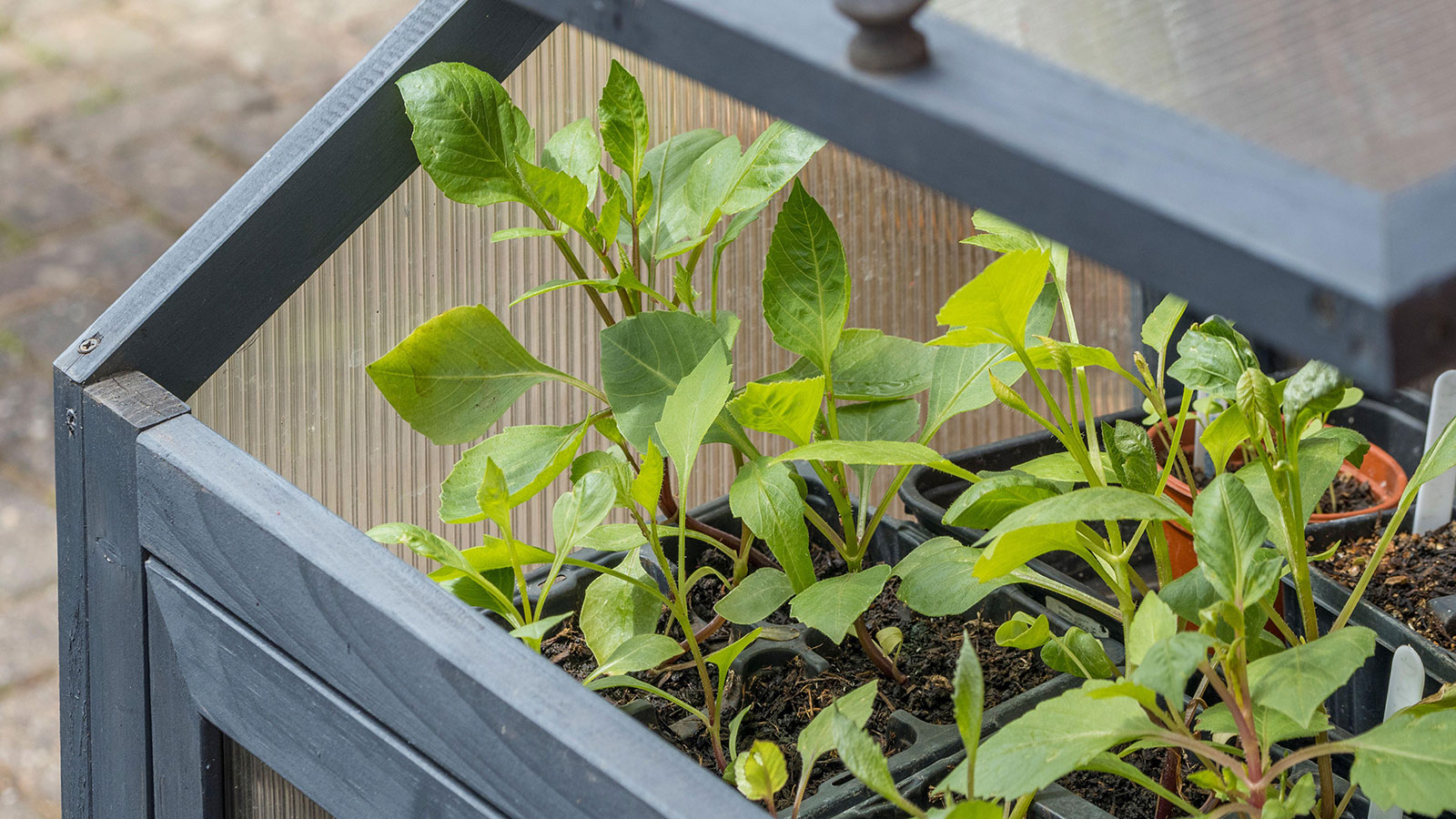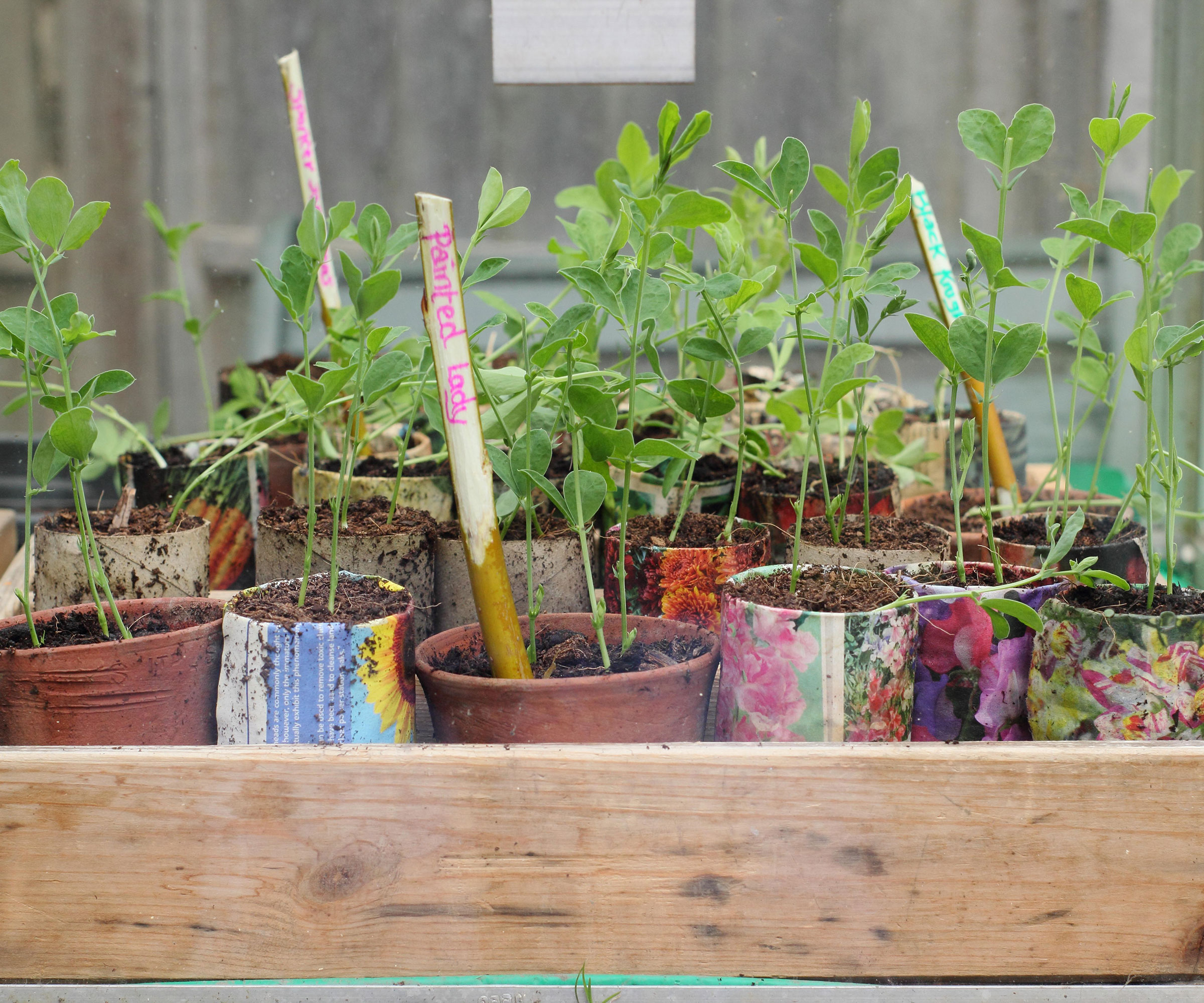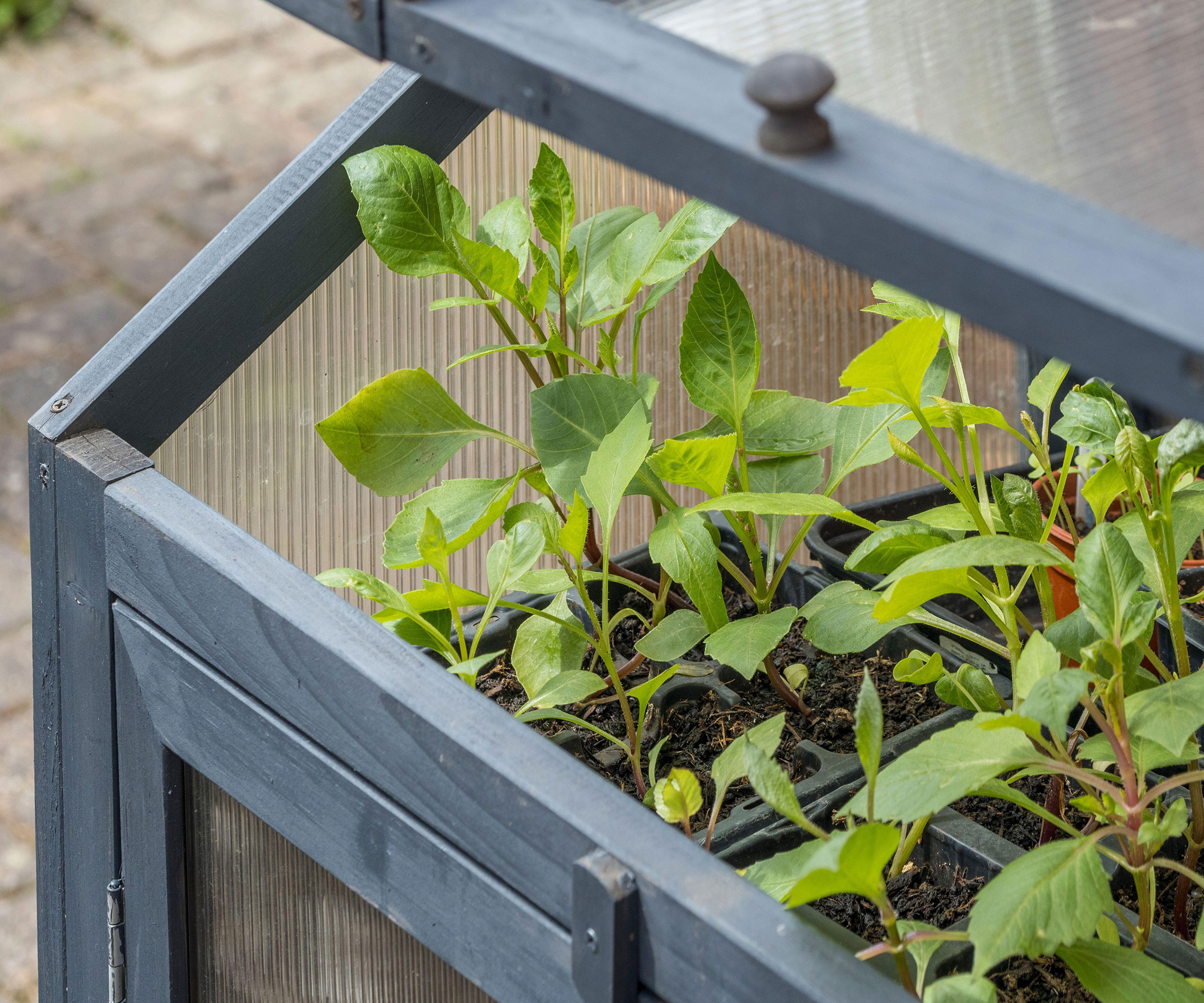
Q: I have grown a range of bedding and young vegetable plants under glass. Some of my neighbors plant theirs straight out while others insist on hardening off seedlings and plants first. Do I need to bother?
A: Hardening off seedlings and plants is the simple process of acclimate them to growing outdoors. Any young plants that have been raised indoors in a more sheltered environment such as on kitchen windowsill or in a heated greenhouse or propagator, will need to gradually get used to life outdoors before being moved to their final spot. If a plant has been grown under protection it needs time to acclimate to normal spring temperatures by gradually increasing exposure to lower temperatures and air movement.
Transplanting seedlings to a bigger pot and moving them outdoors at the first sign of sunny weather can be a huge error, as cold weather can kill off tender plants before they have even had chance to grow properly. 'Rising temperatures in early spring may seem plant-friendly, but in many areas the nights are cold and the last frosts are still some way off, so moving young plants into the garden too early could severely stunt their growth and kill them,' says Homes & Gardens' gardening expert Ruth Hayes. By following the simple process of hardening off seedlings, you can reduce this risk and give your plants the best possible chance for healthy growth.

How to harden off seedlings
'It takes two or three weeks to harden off plants, and during this time the plant’s leaf structure thickens and becomes waxier so it is more able to cope with lower temperatures,' says Ruth Hayes. 'However, do keep in mind that it will not make frost-sensitive plants hardy.'
If you've started off flower seeds indoors (or vegetable seeds indoors too), here are Ruth's tips for successfully hardening off plants:
- Seedlings raised in a heated greenhouse or indoors should start by being moved into a cold greenhouse for a couple of weeks before being placed in a cold frame. If you don’t have a greenhouse, go straight to a cold frame, with the lid open during the day and closed at night. You could also use a mini greenhouse or a DIY greenhouse instead of a cold frame, but make sure that it is zipped up or closed at night. If severe frosts are forecast, protect plants from frost by insulating the structures with bubble wrap or even throw an old blanket over them.
- Keep the lid of your cold frame (or the door of your mini greenhouse) open for longer during the next two weeks until the plants are left totally exposed just before planting.
- By the end of the third week the plants can remain uncovered the whole time and should be ready to plant out. Late-spring frosts can still catch you unawares, so keep some frost protection fabric (available from Amazon) to hand and don’t pack away your cold frame or mini greenhouse until it is safe for plants to remain completely unprotected.
'Once planted out, the use of windbreak materials or screens will also offer some protection from chilling winds while plants establish,' says gardening expert Christine Walkden. 'Keep a close eye on weather forecasts in early spring. If frost is forecast, cover tender plants with several layers of horticultural fleece. And never water young plants in the evening during spring, as the water may turn to ice and damage tender foliage on frosty nights.'

Hardening off seedlings without a greenhouse
If you don't have a greenhouse, cold frame or mini greenhouse to use for hardening off plants, there are still ways you can gradually get your plants ready for being outdoors.
'When any plant is grown indoors, it’s not subjected to the full strength of sun, wind or rain,' says Lucy Chamberlain, a fruit and vegetable growing expert for Homes & Gardens. 'The protection makes leaves soft and vulnerable, so if these youngsters are then placed directly outside their foliage would scorch off.
For that reason, Lucy says it's best to choose an overcast, still day to begin the process of hardening off so that the plant's leaves aren't subjected to strong sunlight or windy weather when they are still so vulnerable. 'Failing that, identify a shady, sheltered spot,' she says. A spot near a garden wall or on a front porch can be ideal. 'For at least the next 4-5 days move your seedlings outside during the day and bring them back inside or under cover at night to begin toughening them up.'
You could also cover your plants with a layer or two of horticultural fleece or frost protection fabric during the day for the first few days, just to give them a little more protection. This Airstar plant cover from Amazon is fully breathable and can be cut to any size so you can use it to cover a large number of seedlings. You can gradually remove the fleece after the first week, but make sure you replace it as dusk falls until the plants are fully hardened off.
'The next stage is to leave your plants outside permanently for a few more days,' says Lucy. 'If they’ve been in a shady area, gradually move them somewhere sunnier. By this time the leaves’ waxy cuticle will have thickened up – it’s the equivalent of us getting a base tan!
'Finally, your youngsters are ready for planting out into their permanent positions. Water plants well beforehand, and the ground. Then give them a light water in after planting and they will romp away merrily. By now their leaves will be fully accustomed to life outdoors.'

FAQs
Do all plants need to be hardened off?
'Plants are often described in books or catalogues as half-hardy or hardy, offering guidance on the level of protection that will be required to successfully grow the plant without cold weather damage in the early spring,' says gardening expert Christine Walkden.
'It’s difficult to find a good definition of hardiness. Most gardeners would say it’s a plant’s ability to tolerate periods of freezing and thawing, without causing harm to the plant. Hardy plants cope with this exposure but half-hardy plants would be damaged or killed, if they have not been subjected to acclimatization, better known as hardening off.
'Half-hardy plants grown under protection with heat should not be planted out until all danger of frost has passed. Examples include antirrhinums, cosmos, diascia, runner beans, tomatoes and cucumbers. They will also need to be hardened off before planting out, otherwise they risk being damaged or killed by low temperatures.'
Should you water seedlings more when hardening them off?
'While hardening off, seedlings may require more frequent watering due to increased exposure to sunlight and wind that can dry out the soil,' says Candace Shah, a gardener and landscape designer from Richmond, Virginia. 'Ensure that the soil remains consistently moist but not waterlogged.'
Moving plants from a very controlled environment to being outdoors can be a huge shock for a young plant. Doing it gradually by learning how to harden off seedlings and plants gives them chance to properly adjust to sunlight, wind and changing temperatures without risk of longterm damage.
You can think of it as sending your seedlings to school! You are effectively training them to be able to deal with their new environment over the course of a few weeks before you move them to their new growing position in your flower bed or vegetable garden.







